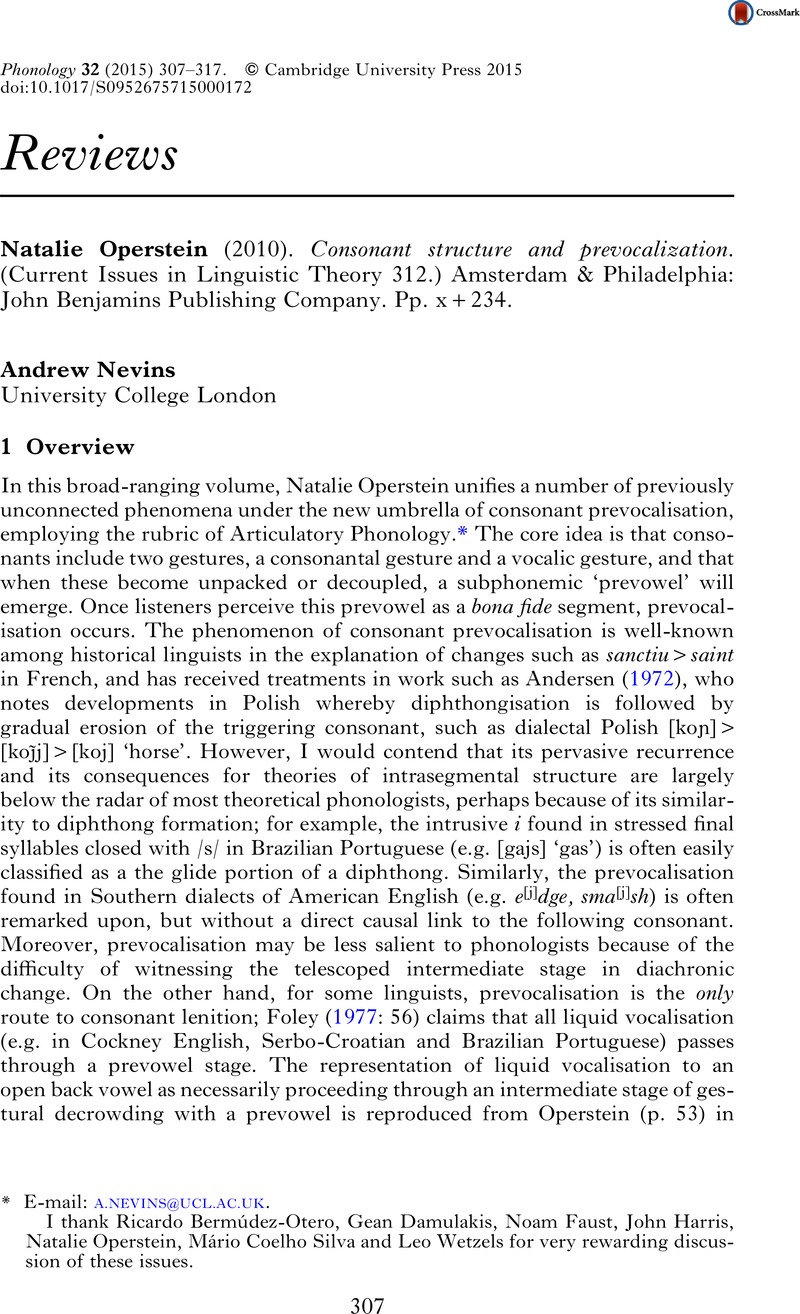Crossref Citations
This article has been cited by the following publications. This list is generated based on data provided by Crossref.
Silva, Mário Coelho da
Nevins, Andrew
and
White, James
2020.
Domains and Prominence in Nasal Harmonization of Maxakalí Loanwords.
International Journal of American Linguistics,
Vol. 86,
Issue. 2,
p.
285.
Becker, Michael
Becker, Michael
Nevins, Andrew
Sandalo, Filomena
and
Rizzato, Érick
2024.
Prosodic generalizations in the Brazilian Portuguese diphthongal plural.
Journal of Portuguese Linguistics,
Vol. 23,
Issue. 1,



